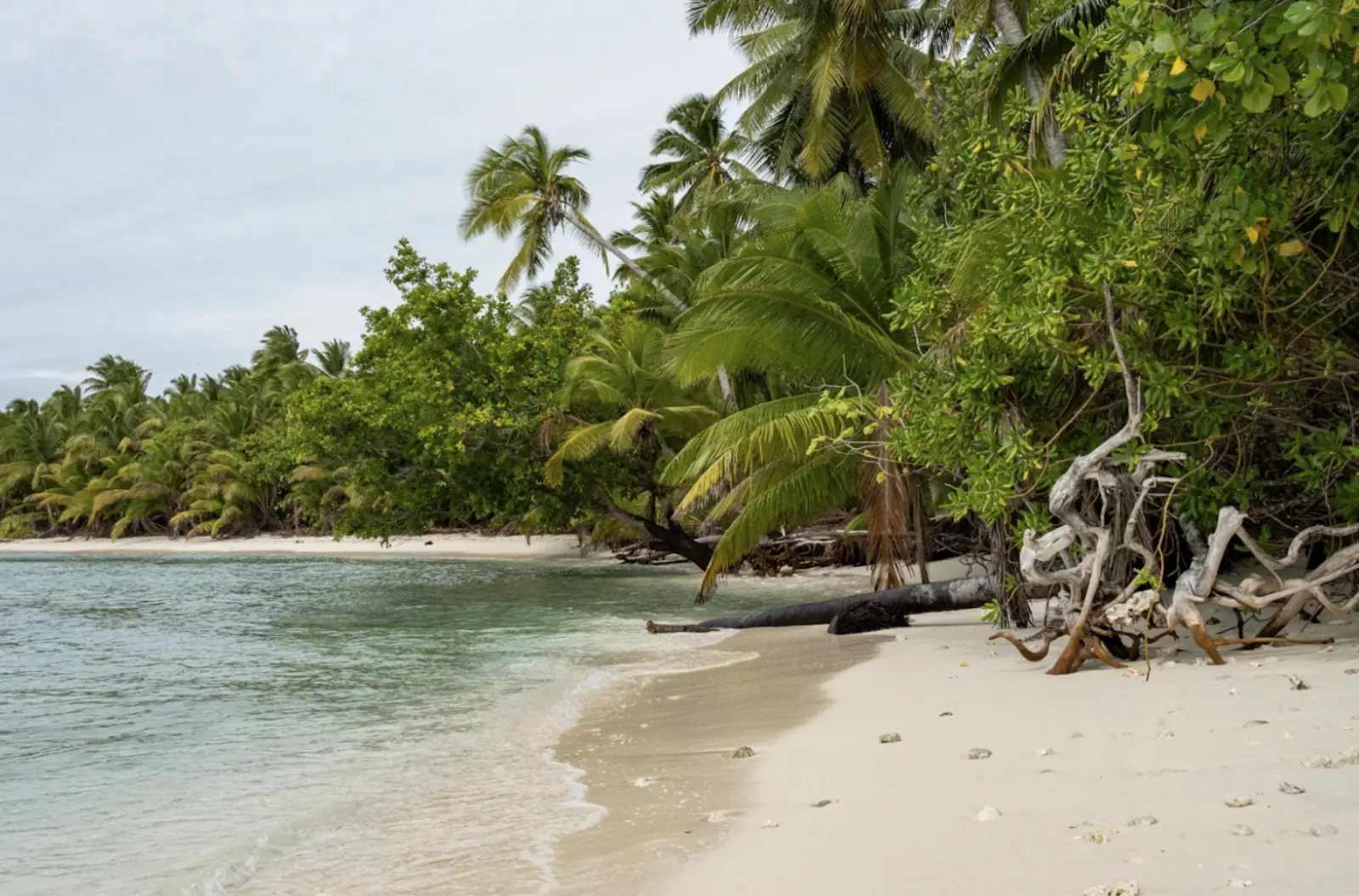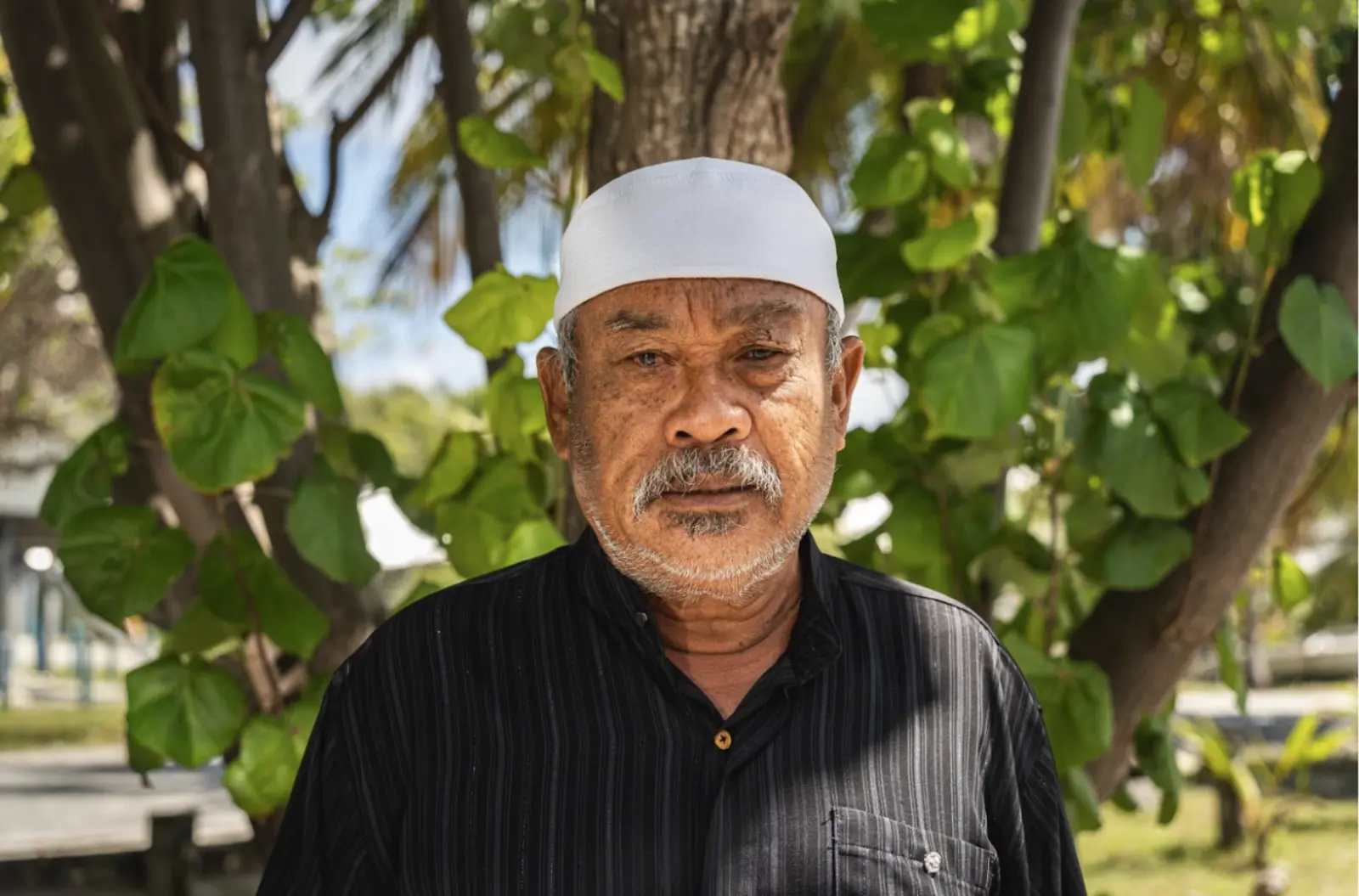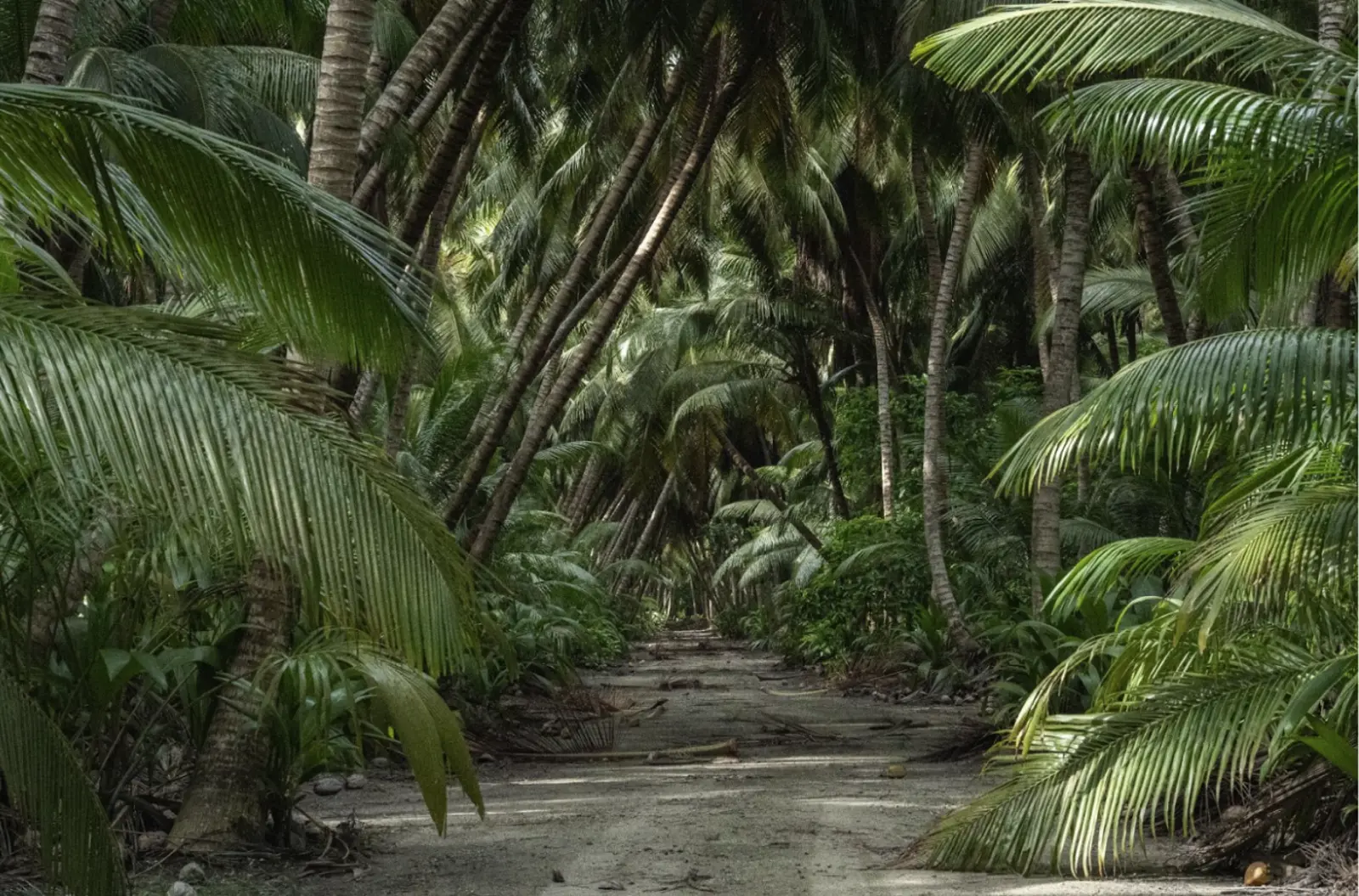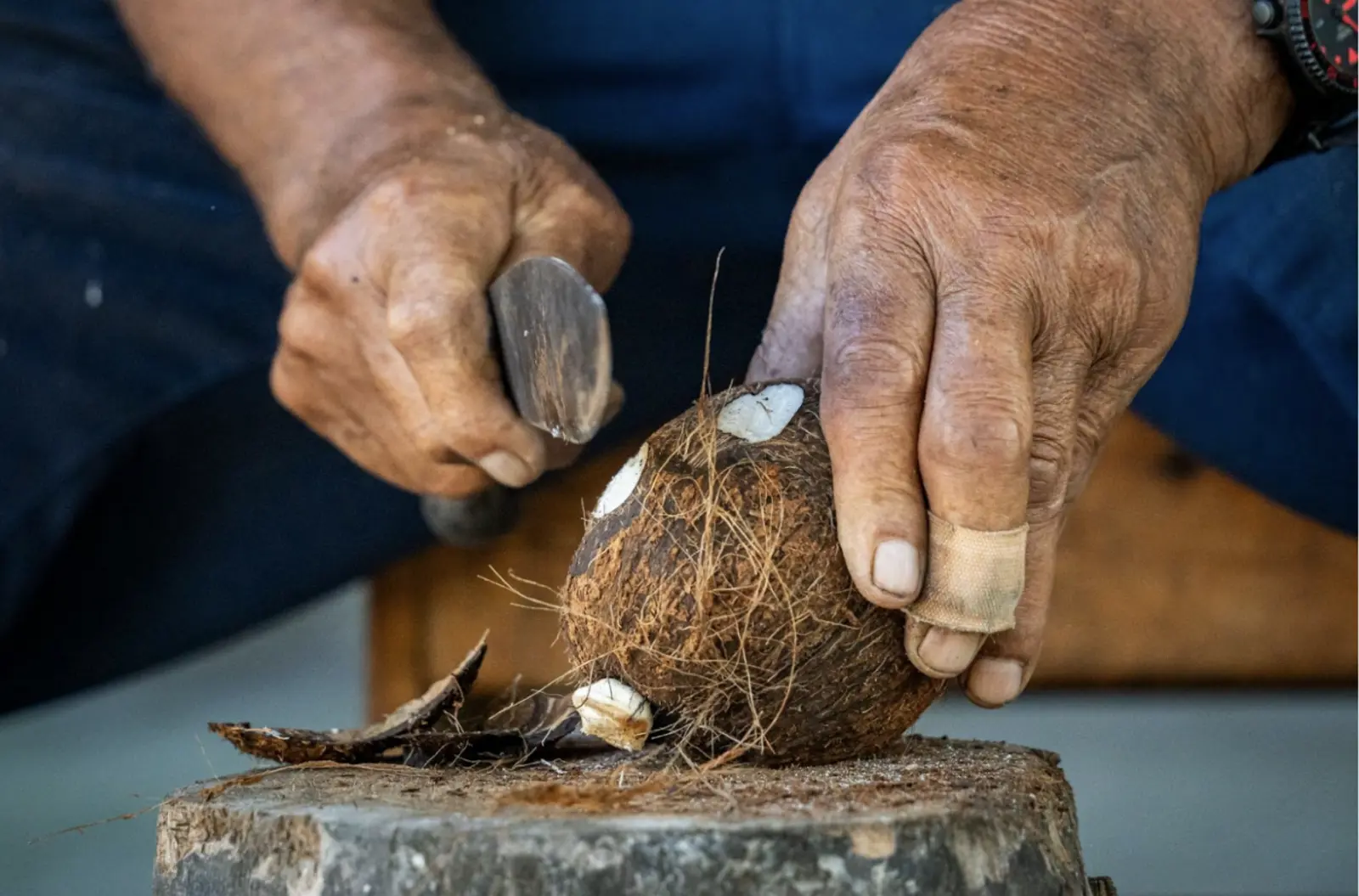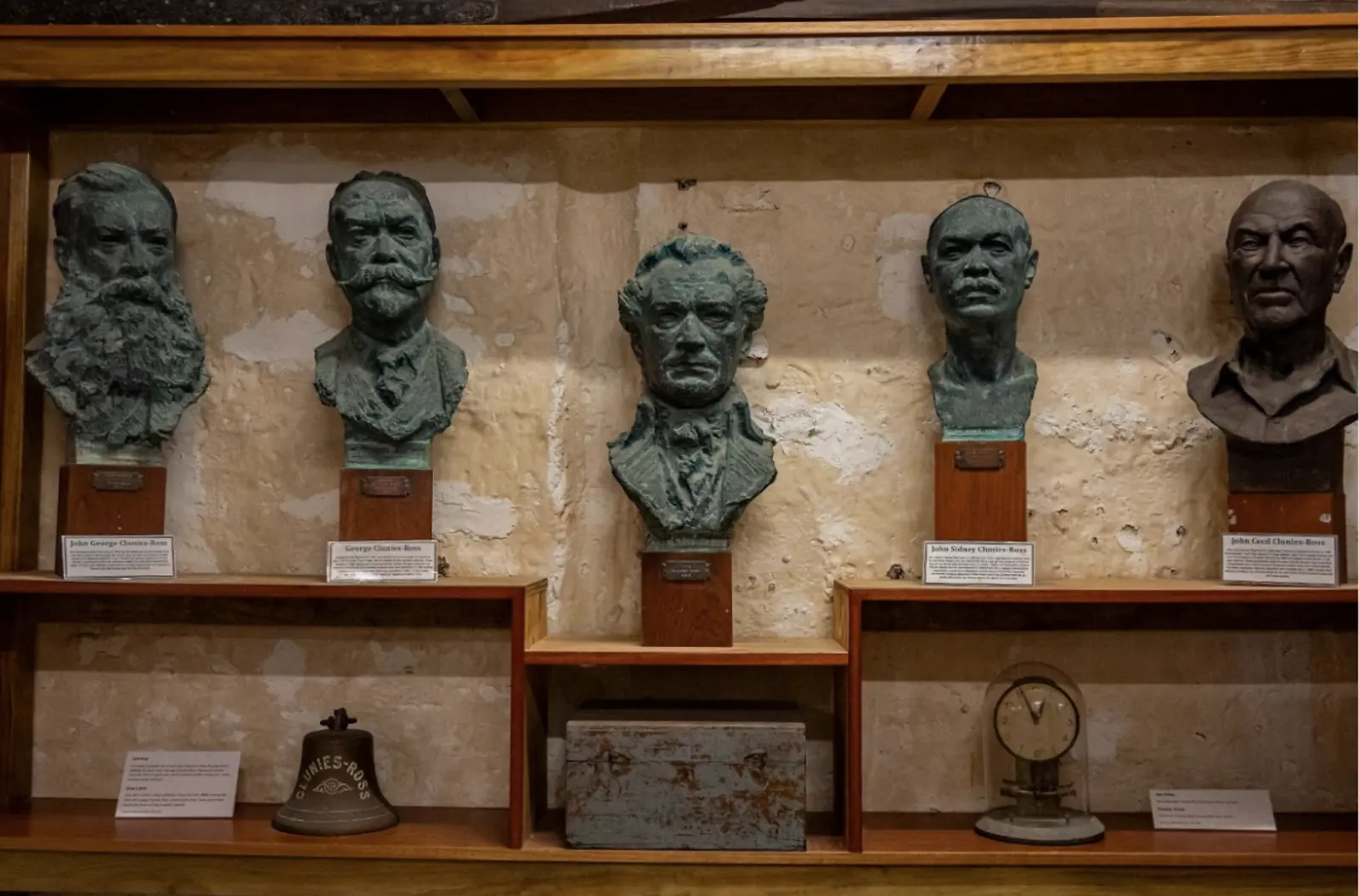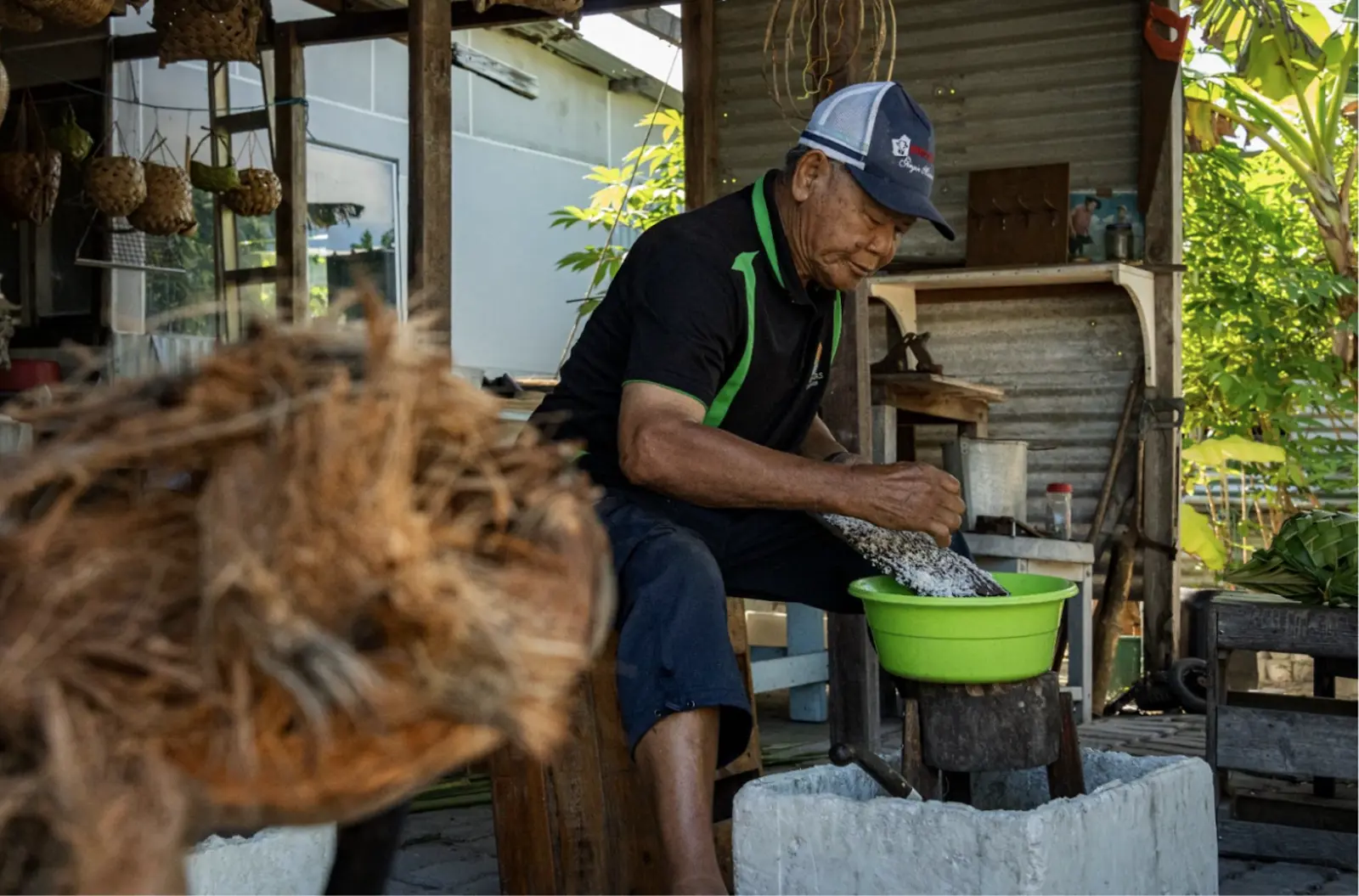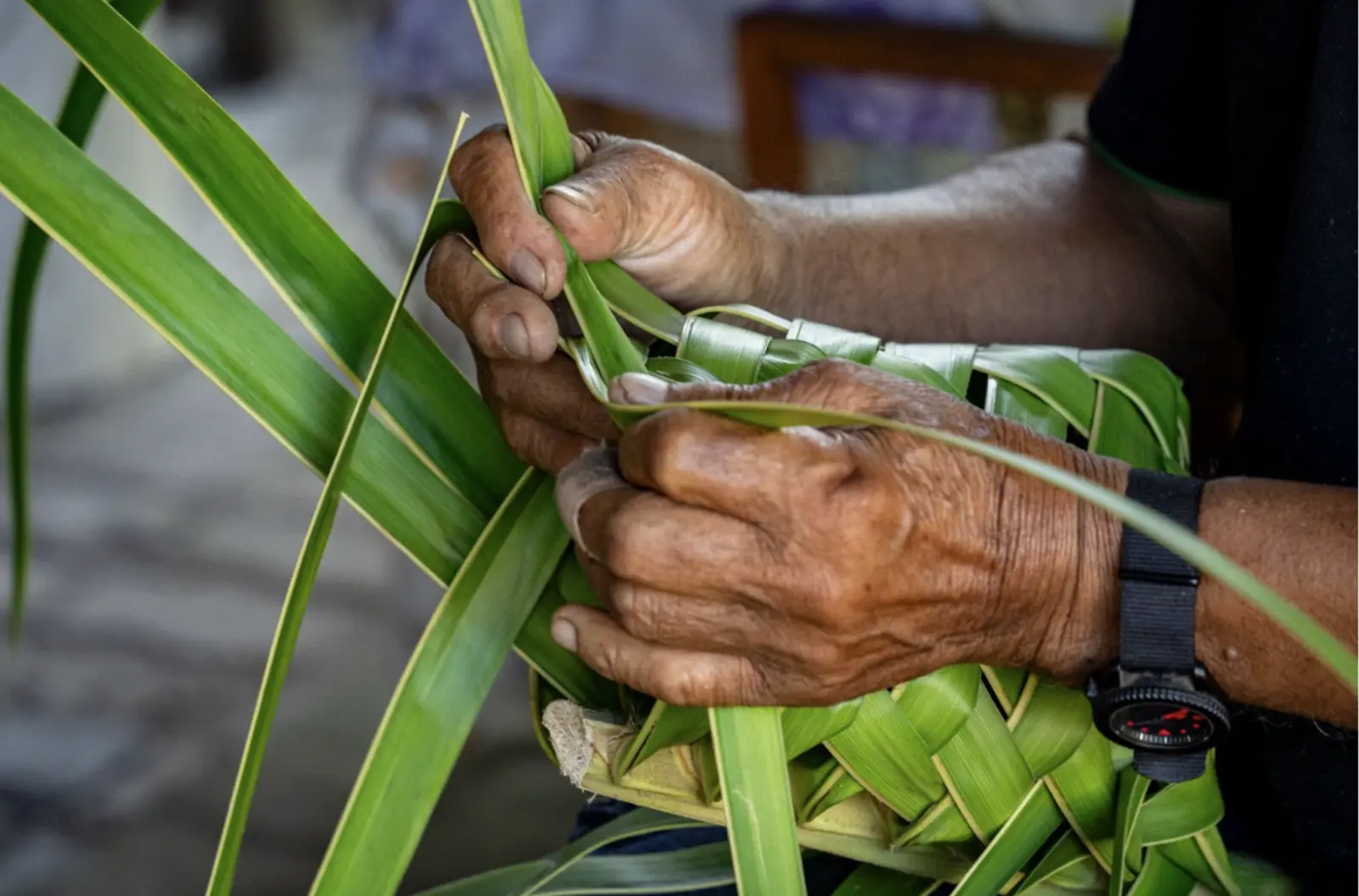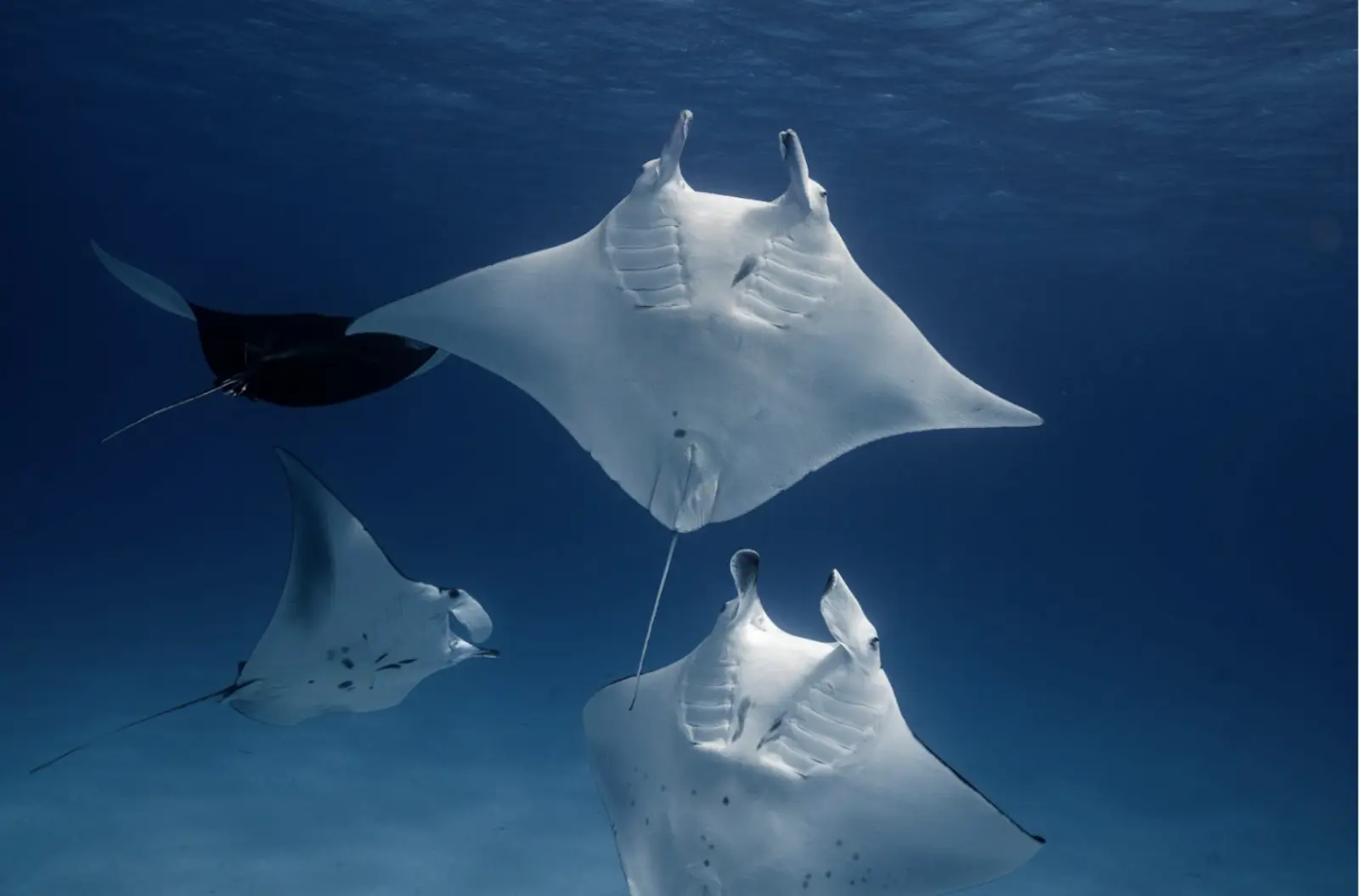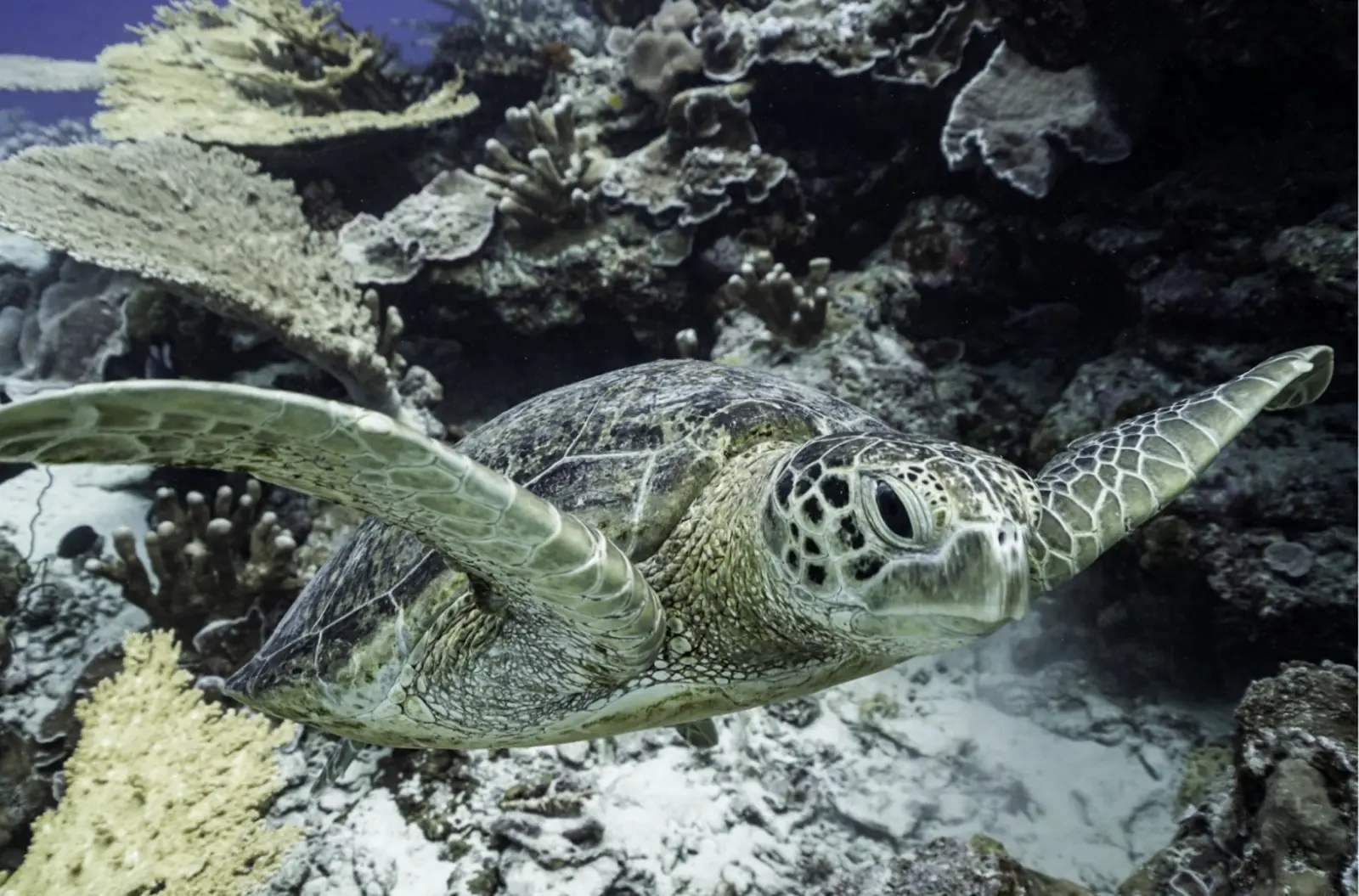Solutions Take Centre Stage at COP30, Marking a New Era of Accelerated Climate Action. Read it here.
Solutions Take Centre Stage at COP30, Marking a New Era of Accelerated Climate Action. Read it here.
Tuesday, 29 July 2025 | By Edges of Earth & Climate Champions
An interview with: Haji Adam, Community Leader, Imam (Muslim Priest) & Elder with Cocos Island Marine Park & Cocos (Keeling) Islands Tourism Association
Country & Region: Home Island, Cocos (Keeling) Islands, Australia
Breakthrough: Marine Conservation & Coastal Tourism
Beneficiaries / Impact: The Cocos (Keeling) Islands community, particularly the Cocos Malays, are the primary beneficiaries of efforts to preserve their cultural heritage, environment, and way of life. Initiatives such as the establishment of the Cocos Islands Marine Park, the support from Cocos (Keeling) Islands Tourism Association, and the creation of Home Island Museum, ensure the protection of vital ecosystems, supporting sustainable practices that strengthen both environmental and economic stability. These conservation efforts safeguard habitats for unique species, develop eco-tourism opportunities, and provide a framework for scientific study, directly benefiting the community by attracting visitors while preserving the natural resources they depend on.
Additionally, the increasing focus on sustainable tourism creates pathways for economic growth while honouring the traditions of the Cocos Malay people. By engaging tourists with the island’s rich history, culture, and ecological significance, the community can generate much-needed income while promoting global understanding and respect for their unique way of life.
(Image: The rugged and raw Cocos Islands)
The Cocos (Keeling) Islands, part of a vast marine park spanning over 467,000 square kilometers of protected ocean, represent one of the largest marine sanctuaries in the world. This extraordinary conservation area safeguards an ecosystem rich with biodiversity, including unique coral reef species, over 600+ types of fish, and a range of migratory and threatened species that draw visitors from across the globe. The influx of eco-tourism sparked by this marine park offers hope for the community of traditional Cocos Malays, providing opportunities for cultural preservation and economic growth.
During their time on the islands, the Edges of Earth team had the privilege of sitting down with Haji Adam, the Imam and respected elder of the Cocos Malay community. As the leader of Home Island – one of only two inhabited islands in the 27-island archipelago – Haji Adam shared stories of his life, the challenges facing his people, and the delicate balance required to preserve both their culture and the environment that sustains them.
(Image: Haji Adam of Home Island)
I’ve spent my entire life on Home Island, the heart of the Cocos Islands. This is where our community, the Cocos Malays, has lived for generations. Home Island is our haven, a place of faith, tradition, and history. We are a Muslim community, with about 600 of us still living here (all of whom I know personally) while only a small handful remain on West Island. Though our lives are rooted in the beauty of these remote islands, our history has not been without hardship.
The story of the Cocos Islands began long before my time. The islands were uninhabited until 1826, when Alexander Hare, an English merchant, first arrived. He brought workers and established the islands as a small settlement. A year later, Captain John Clunies-Ross followed, setting up his own settlement and eventually taking over as the islands’ ruler. Under Clunies-Ross, Home Island became the residential hub, and the Cocos Malays, brought here to work, became part of a system of colonization and control.
Life under the Clunies Ross family was defined by the coconut plantation. Coconut trees, which naturally grew on the islands, became the foundation of a thriving copra industry. Our ancestors worked tirelessly, splitting and drying the coconuts for export to places like Singapore. While this trade sustained the economy, it also tethered our community to the plantation system. We lived in simple homes, worked hard, and had little knowledge of life beyond the islands. I would know, I was there.
(Image: Coconut plantations found on the Cocos Islands)
Looking back, it’s clear how deeply isolated we were. Clunies Ross controlled everything—our economy, our movement, even our connections to the world outside. The currency we were paid with could only be used on the islands – created by Clunies himself — ensuring we remained dependent. Communication was strictly limited; radios and televisions were prohibited, and we couldn’t interact with people on West Island. It was a closed system, designed to keep us contained.
In the late 19th century, the islands officially came under British rule, further entrenching colonial oversight. Queen Victoria granted all the land on the islands to John’s relative, George Clunies-Ross, in 1886, solidifying his family’s control for nearly a century. During both World Wars, the islands gained strategic importance. The cable station on Direction Island played a vital role in communication across the Indian Ocean and was targeted by enemy forces. These were tumultuous times, and while the world was changing, life on Home Island remained much the same – controlled, insular, and labor-driven.
Things began to shift in the mid-20th century. By 1955, the Australian government took over the administration of the islands, which was a choice we made. In 1979, Clunies Ross gave our community the option to leave, and many chose to move to mainland Australia, settling in places in Western Australia like Geraldton and Katanning. Then, in 1984, the Cocos Malays voted to integrate fully with Australia, finally gaining citizenship and greater rights.
(Image: the Cocos Malay are known for their coconut harvesting and craftsmanship)
While many left to build new lives, I stayed. Home Island is well … my home. And even with its complicated history, it’s where I belong. The legacy of colonization is still felt here, but it is also a story of resilience – of a community that has endured, adapted, and right now, is trying to hold on to its cultural identity.
On the surface, Home Island may look like it hasn’t changed much. The same rows of simple homes line the shores, and the familiar faces of the Cocos Malays greet you at every turn. But beneath the surface, both socially and environmentally, the island has transformed in ways that reflect a world slowly encroaching on our once-isolated way of life.
Growing up, we were deeply tied to the ocean and the land. Today, there’s still pieces of that. But it’s different. Everyone learned to swim – not for leisure, but out of necessity. When I was growing up, we fished, collected crabs, and climbed coconut trees for sustenance. A single meal might come from the land and sea, with three coconuts providing enough milk to drench crabs caught from the lagoon. Back then, there were no restrictions or quotas on how much fish you could take from the ocean. But times have changed and this has become a necessity. Australian regulations now limit what we can catch, and there is no commercial export of fish anymore. Bringing fish to the mainland for family or friends is tightly controlled, with strict rules on species and sizes.
(Image: the Cocos Islands have active crab populations)
Boats are another symbol of change. The wooden vessels we once relied on have been replaced by modern ferries, which now shuttle people and goods between islands. While they’ve made life more convenient, they’ve also severed some of the cultural threads that connected us to our ancestors' way of life. The days of living entirely off the land are fading, replaced by a more regulated and modern existence. Today, people learn to swim so that, if a ferry breaks down between Home and West Island, they can get back to shore!
Education has brought opportunities we never imagined, but it’s also led to a slow erosion of our traditions. Children now finish their schooling on the mainland, attending years 11 and 12 far from Home Island. Many never return, lured by the opportunities and choices that cities can offer. The result is a generational divide: the elders, like me, are trying to preserve our heritage, while the younger generation sees little value in the old ways. Skills that were once essential, like climbing for coconuts, traditional Malay dancing, or music, are slowly disappearing. Even the coconuts themselves have shifted in purpose. What were once vital exports are now used to feed the chickens.
As the leader of our community, it’s my responsibility to be the voice of Home Island and to protect our traditions, while also bringing our community into the future; finding a balance. But I fear for the future. Without someone to carry the torch, so much of our culture could be lost forever. The sense of unity we once had, our connection to the land and sea, and the richness of our heritage, all of it feels fragile now. For me, resigning from this role isn’t an option, because to step away would be to watch everything we’ve built fade away.
Let me tell you about the elder, Wak Udin. He lives on Home Island, and his life embodies the spirit of the Cocos Malay people and our traditions. Wak Udin has lived through it all; the hardships of working under the Clunies-Ross family, the challenges of sustaining a community cut off from the rest of the world, and now the fight to preserve our culture as it slips further from the younger generation’s grasp.
Wak Udin started working when he was just 14, and his stories are like windows back in time. Back then, he worked for the Clunies-Ross family, taking on a range of hard tasks. He was often on the boats, called jukongs, with their small sails, heading out to harvest coconuts or hunt on uninhabited islands like North Keeling. No matter the weather – stormy skies or calm seas – Wak Udin was out there, sourcing hundreds of coconuts by hand. He’d gather as many as 600 in a single trip, sailing them back to the sheds where the women would dehusk and dry them, readying them for shipment to Singapore. It was backbreaking work, earning him just a few rupees for his effort. Even with the option to leave for better opportunities in Southeast Asia, Wak Udin chose to stay. He always said, “This is my land, and I want to be where I’m from.”
(Image: Wak Udin demonstrating his skill preparing coconuts)
Today, most people work for the government, the shire, or in schools and local businesses. Tourism brings in a bit of income, and has become quite important to us. Wak Udin now participates in tourism, showing off his hand crafted works, but remembers the days when he spent more time on the ocean, traveling on those small boats, living off the land, and working with his hands. He often laments that the younger generation wouldn’t know how to do the things he once did. Husking coconuts, weaving mats, making oils—these skills are hard, and vanishing. But they are important to us.
Wak Udin is a member of our elders' group, Suka Duka, made up of 16 individuals who are determined to carry on what remains of our heritage. They practice traditional crafts like weaving, salt making, and coconut oil production, as well as dancing and senior exercises to stay active. Wak Udin and I are the last links to the way things used to be. We carry the weight of that responsibility, knowing that once these skills are forgotten, they may never return.
(Image: traditional skills are dying for the Cocos Malay)
And I can’t forget to mention climate change. There are no strangers to the impacts of climate change, not even here, not even so far away from any mainland. It’s a constant battle against flooding, seagrass depletion, and relentless erosion. Our shores are lined with sandbags placed by the government, a small effort to stave off the sea from coastal erosion. But when the storms come – and they do, with increasing ferocity – these measures are simply coverups. The truth is, our islands are vulnerable, and without more effective solutions, we risk losing parts of our home to the ocean.
Scientists have been working all the time to study these challenges and propose better ways to protect us. They present their findings to the Australian government, advocating for funding and resources that could make a real difference. I work with them as a liaison for the community, which has taught me a lot. It’s been a good, strong partnership between science, community and government. One significant step forward has been the establishment of the Cocos Islands Marine Park, a milestone for conservation.
(Image: an unexpected marine encounter diving the Cocos Islands)
The marine park represents hope for the future. It’s a commitment to preserving the ecosystems that sustain life here. By protecting habitats like seagrass beds essential for green turtles and outer reefs that are home to fish and coral, we’re taking steps to buffer against the changing climate. But it’s not just about conservation, it’s about adaptation. The park provides a framework for science, offering opportunities to better understand how our environment is changing and what we can do to address it.
This work is a responsibility I take seriously because the stakes are so high. The establishment of the marine park is a start, but there’s more to be done. The future of the Cocos Islands depends on finding solutions that work; not just for the environment, but for the people who call these islands home.
As I look towards the future of Home Island, I see both opportunities and challenges. Tourism has become one of the only viable industries left for us here, and the majority of our community agrees that it’s essential for our survival. Visitor numbers have been steadily increasing, and with them, small private businesses are emerging to cater to the growing demand. This brings hope, not just for our economy, but for the preservation of our culture.
(Image: there’s a lot worth protecting around the Cocos Islands)
However, tourism must be the right kind; sustainable, eco-conscious, and respectful of what makes Home Island unique. Our traditions, religion, and way of life are woven into the fabric of this place, and they must be protected as we open our doors to the world. If tourism doesn’t strike this balance, Home Island risks losing the very essence of what draws people here in the first place.
I hope that the future holds a strong Home Island, where traditional Cocos Malay culture is not just remembered but actively celebrated. But that depends on visitors approaching our community with respect and understanding. My message to anyone who comes here is simple: honor our way of life. Work with us, not against us. Learn about our traditions, our environment, and our history. Only then can Home Island remain a true home; not just for those of us who live here, but for everyone who wishes to experience it.
As told to Andi Cross in November 2024.
Resulting from the joint efforts of the Ocean & Coastal Zones community and building on the Ocean for Climate Declaration, the Ocean Breakthroughs have identified five turning points to reach by 2030 to achieve a healthy and productive ocean in 2050. These five turning points are focused on the most crucial ocean sectors: marine conservation, ocean renewable energy, shipping, aquatic food, and coastal tourism. Accelerated action and investments in each will help unlock the potential of the ocean as a source of solutions to the pressing challenges posed by climate change and biodiversity loss.
The scientific evidence is clear: as a major climate regulator and the largest living space on Earth, the ocean is integral to delivering the goals of the Paris Agreement and the Global Biodiversity Framework. The Ocean Breakthroughs are science-based targets designed to boost mitigation and adaptation efforts, for the benefit of People and Nature. They will contribute to delivering on the global campaigns led by the Climate High-Level Champions, namely the Race to Resilience and Race to Zero, and their respective action agendas: the Sharm El-Sheikh Adaptation Agenda and the 2030 Breakthroughs.
The women-led global expedition, Edges of Earth, has partnered with the Climate High-Level Champions to bring to life the Ocean Breakthroughs initiative by sharing personal accounts and climate action stories from remote coastal communities.
